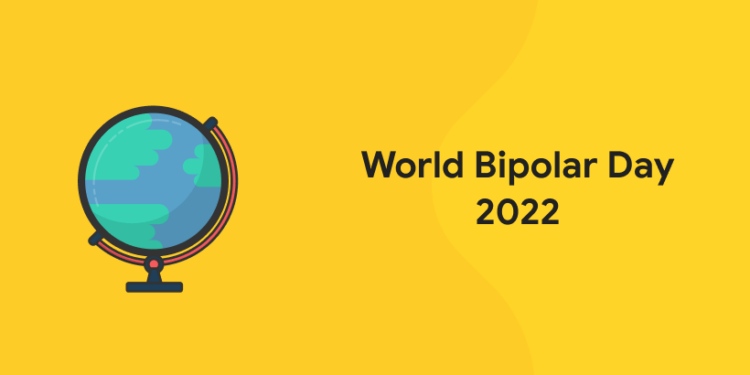Table of Contents
World Bipolar Day, observed on March 30th every year, is designed to raise universal awareness of bipolar conditions. It is the birthday of Dutch painter Vincent van Gogh who was one of the most influential artists in the history of Western art and was posthumously diagnosed with bipolar disorder. The aim of World Bipolar Day is to eliminate social stigma surrounding the condition and to provide information to educate and help people understand the disorder.
According to a recent survey, more than 45 million people around the globe have bipolar disorder. This is a condition which dramatically affects the mood and may result in episodes of depression and elation, which can affect one’s health, productivity, and relationships. World Bipolar Day promotes the spread of information on bipolar disorder through international collaborative efforts.
World Bipolar Day History
World Bipolar Day is an initiative by the International Society for Bipolar Disorders (ISBD) who partnered with the International Bipolar Foundation (IBPF) and the Asian Network of Bipolar Disorders (ANBD). Diagnosis of bipolar disorder dates back to ancient Greece. The International Bipolar Foundation (IBPF) was founded in 1999 and since then it has been researching bipolar disorders and helping people who are suffering from it.
Hippocrates, who has often been referred to as “the father of medicine”, is considered to be the first person to mention about the disorder. It has been mentioned in his medical literature. He documented his findings on two polar opposite moods — what is known now as depression and mania. A more conceptual understanding of bipolar disorder occured in the 19th century when in 1854 French neurologist Jules Baillarger and French psychiatrist Jean-Pierre Falret presented descriptions of bipolar disorder to the Académie de Médecine in Paris. Baillarger referred to the illness as ‘folie à double forme,’ meaning dual-form insanity, and Falret called it ‘folie circulaire,’ meaning circular insanity.
What is Bipolar Disorder?
1: Who was the first woman President of India?
Bipolar disorder (formerly called manic-depressive illness or manic depression) is a mental disorder that causes unusual shifts in mood, energy, activity levels, concentration, and the ability to carry out day to day tasks. People with this mental illness lead disrupted lives, as the disorder impacts one’s ability to function.
Bipolar tendencies can develop during early adolescence, as a teenager, or later on as a young adult. However, an early diagnosis of this condition is not easy as many of the symptoms of bipolar overlap with the natural tendencies of hormone fluctuations and puberty that occur during those ages. Extreme mood swings go unnoticed or are considered as temperamental issues, while the inflicted person is actually going through a bout of mania or depression. Negative symptoms may also seem to get better for long period of time. Hence, in most of the cases, bipolar is often diagnosed later in life after it has already fully developed into a more acute form.
Bipolar disorder is generally a lifetime diagnosis. It cannot be completely cured and it requires a lifetime of treatment. Medication and extensive counseling can help significantly mitigate the effects and intensity of manic and depressive episodes. Many individuals see the most success with a focused bipolar treatment plan for managing episodes.
Causes and Treatment of Bipolar Disorder
Even though no specific cause has been identified for bipolar disorder, experts believe it occurs due to a combination of biological factors, genetic makeup, and environmental context. Since bipolar is neither purely physiological nor isolated exclusively to the mind, a broader range of treatment modalities and medication may need to be employed for the most beneficial treatment plan.
Bipolar Disorder can be hereditary. If immediate family members, including parents and siblings, have been diagnosed as bipolar, there is a higher risk for developing bipolar. Drug and alcohol abuse, as well as periods of intense stress or trauma, can also lead to the onset of bipolar symptoms.
Identifying and addressing the symptoms early on is one of the best ways to minimize a manic or depressive episode. Moreover identifying the patterns of mood fluctuations may help individuals identify triggers and anticipate episodes. Bipolar symptoms usually get worse with age when left untreated. The longer an individual goes without treatment, the greater the negative impact their fluctuating moods will have on their personal and professional lives. When the mood changes, one can see changes in energy levels or how one acts.
Types of Bipolar Disorder
According to the American Psychiatric Association, there are four major categories of bipolar disorder: bipolar I disorder, bipolar II disorder, cyclothymic disorder, and bipolar disorder due to another medical or substance abuse disorder. The rarest form of bipolar disorder is Cyclothymia, also called cyclothymic disorder. Cyclothymia causes emotional ups and downs, but they’re not as extreme as those in bipolar I or II disorder. With cyclothymia, one experience periods when the mood noticeably shifts up and down from ones baseline.
Symptoms of Bipolar Disorder
- feeling sad, hopeless or irritable most of the time.
- lacking energy.
- difficulty concentrating and remembering things.
- loss of interest in everyday activities.
- feelings of emptiness or worthlessness.
- feelings of guilt and despair.
- feeling pessimistic about everything.
- self-doubt.
Free UPSKILLING Courses!
Take your first step toward mastering in-demand skills, acing interviews, and securing top-tier jobs with Entri's free upskilling courses.
Start Learning!World Bipolar Day Symbol
The Colon, an Open Parenthesis, and a Colon ‘ :(: ‘ is the symbol of Bipolar disorder. The symbol makes a kind of double emoticon. From one side, it’s is a smiley face and from the other, it’s a frowny face. With its two extremes, this symbol represents the highs of mania and lows of depression. Black-and-white striped ribbon is used to raise awareness for bipolar disorder. This represents the episodes of depression and mania that can be part of bipolar disorder. Bipolar disorder might sometimes also be represented by a green ribbon.
How to Observe World Bipolar Day?
World Bipolar Day’s ultimate goal is to educate societies about the disorder in order to eliminate social stigma and promote acceptance. This year, the theme is #BipolarTogether!. Members of the public across the globe are being encouraged to use social media to help disseminate information and get the event’s hashtags trending on social media. You can be a part of the day in the following ways:
- Use the hashtags #WorldBipolarDay and #BipolarStrong whilst tagging @intlbipolar on Twitter and Instagram and @InternationalBipolarFoundation on Facebook.
- Discuss ways to collaborate and spread awareness about bipolar disorder throughout the community.
- Organize, publicize, and attend local events.
- Reach out to patients, families and advocacy groups to invite them to work together on this global project to sensitize and bring awareness to bipolar disorders.
- Talking openly about mental health is one of the best ways to reduce the stigma around it. It helps to promote connectedness, validation, hope, empowerment and appreciation.
Living with bipolar disorder is not easy but, in the words of Van Gogh himself, “The beginning is perhaps more difficult than anything else, but keep heart, it will turn out all right.” World Bipolar Day offers an opportunity to those living with this condition to connect with others as well as to get assistance in gaining access to valuable resources and relationships that can improve their lives through treatment.
According to Manuel Sanchez de Carmona, ISBD President, “WBD is a platform to think global and act local – our vision will be attained with a motivated and strong local effort.”












